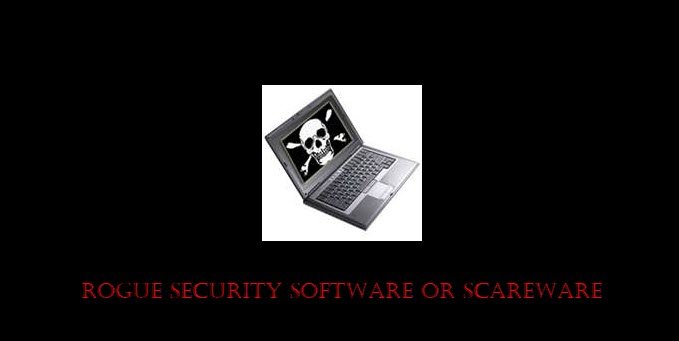Rogue Security Software, also known as Scareware, is software that appears to be beneficial from a security perspective but provides limited or no security, generates erroneous or misleading alerts or attempts to lure users into participating in fraudulent transactions.

How did rogue security software get on my computer?
Rogue security software designers create legitimate-looking pop-up windows that advertise security update software. These windows might appear on your screen while you surf the Web.
The “updates” or “alerts” in the pop-up windows call for you to take some sort of action, such as clicking to install the software, accept recommended updates, or remove unwanted viruses or spyware. When you click, the rogue security software downloads to your computer.
What does rogue security software do?
Rogue security software might report a virus, even though your computer is actually clean. The software might also fail to report viruses when your computer is infected. Inversely, sometimes, when you download rogue security software, it will install a virus or other malicious software on your computer so that the software has something to detect.
Some rogue security software might also:
- Lure you into a fraudulent transaction.
- Use social engineering to steal your personal information.
- Install malware that can go undetected as it steals your data.
- Launch pop-up windows with false or misleading alerts.
- Slow your computer or corrupt files.
- Disable Windows updates or disable updates to legitimate antivirus software.
- Prevent you from visiting anti-virus vendor Web sites.
- Rogue security software might also attempt to spoof the Microsoft Updates process.
To help protect yourself from rogue security software:
- Install a firewall and keep it turned on.
- Use automatic updating to keep your operating system and software up to date.
- Install anti-virus and anti-spyware software such as Microsoft Security Essentials and keep it updated.
- Use caution when you click links in e-mail or on social networking Web sites.
- Use a standard user account instead of an administrator account.
- Familiarize yourself with common phishing scams.
Read: How to enable Scareware Blocker in Microsoft Edge
Rogue Remover software
If you think you might have rogue security software on your computer, scan your computer using Microsoft Security Essentials or your anti-virus software. Use one of these Rogue Removers:
-
Eset Rogue Applications Remover will help you remove the malware if you suspect that your computer has infected with a rogue application and/or that it has made undesirable changes to your registry
- RogueKiller is a tool for advanced users. It scans for, identifies, and allows you to kill malicious processes, unload malicious dll files, remove malicious autostart entries, fix DNS, Fix Hosts hijacks, Fix Proxy hijacks, Fix malicious MBR and more.
Additional reading:
This is a good article for newer users, great job!
Mbam is far better than MSE at detecting and removing fake antivirus. Use Avast or Avira if you need a good free antivirus. MSE is useless anyway.
@Vijay; i don’t recommended avira, it will eat everything..